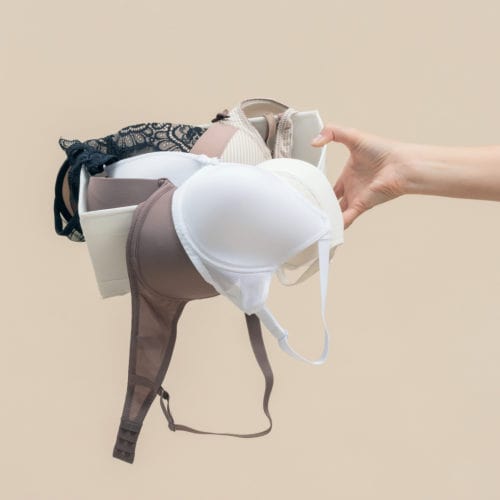Every day, millions of women worldwide wear bras. It’s an essential undergarment that has been a part of our daily lives for decades.
But have you ever stopped to wonder when the first bra was invented? Or who invented the bra and why?
If so, you’re in for a treat!
I’ll take you on a journey through centuries and continents to explore the intriguing origins and evolution of the bra.
Keep reading to discover how this essential piece of underwear changed women’s lives – and the world as a whole.
Key Takeaway
- Early bras were corsets that were rigid, restrictive and uncomfortable. The first bra-like garment was invented in the 1800s in France when a corset was split into two parts.
- The modern brassiere was patented in 1914 by Mary Phelps Jacob. Her design used silk handkerchiefs and ribbon and was comfortable and practical compared to corsets.
- Key innovations in bra design include padded cups, underwire bras, push-up bras, sports bras and memory foam bras. Each addressed specific needs for support, comfort, shaping and active wear.
- Bra designs and styles have evolved over time with changing fashions and cultural norms, from corsets to bullet bras to plunge bras. Bras allowed women more comfort and freedom.
- Milestones include the first mass-produced bras in the 1920s, introduction of cup sizing and elastic in the 1930s, and iconic designs like the bullet bra in the 1940s-50s.
- Bras have had a significant impact on women’s fashion and empowerment by allowing more options for support and self-expression. The bra remains an enduring symbol of femininity and women’s changing roles.
Early Bra-Like Garments
If we take a huge step back in history – Ancient Greece, for that matter – bras were almost non-existent.
Instead of proto-bras or even early signs of this type of undergarment, women didn’t wear anything underneath their clothes. Instead, they heavily relied on tunics.

It wasn’t until long after the Renaissance era that corsets made a breakthrough. These undergarments gained significant importance among women, ultimately providing support and shape for their bodies.
However, it’s important to note that they weren’t flawless.
Although they prevailed for centuries to come, corsets were often known for being very restrictive and rigid on the skin. This made women feel uncomfortable after hours of wearing them.
The notion of comfort, when speaking about undergarments, was possible in the 19th and 20th centuries – when more practical bras emerged that actually addressed the specific needs of women.
The 1830s were the prime years of corsets. It was also when the years when this term was first used.
The Pioneers of Bra Design: Who Invented the Bra?
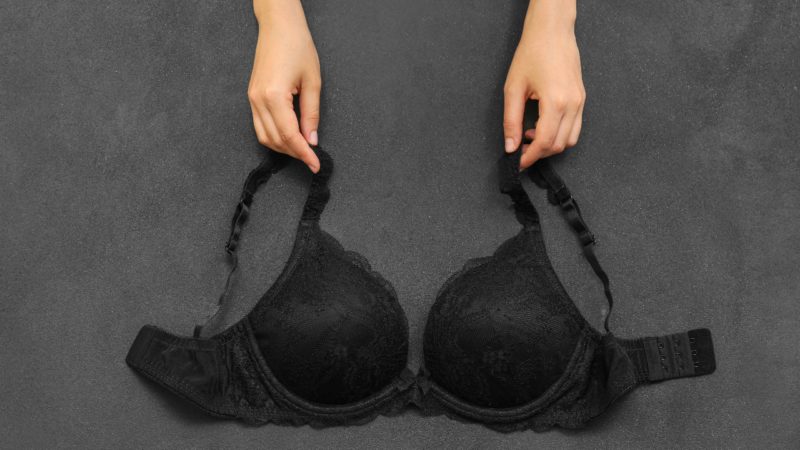
The evolution of the bra had an indeed fascinating journey through women’s history.
The story begins a long time ago, precisely speaking, Herminie Cadolle, a pioneering French designer at the time. She played a pivotal role in the early 1800s, when the evolution of the brassiere, so to say, was at the very beginning.
In fact, the was the sole creator of the coining term ‘brasierre.’ The aim was to describe her innovative and newly designed undergarments for women successfully.
Her intention was purely to provide support and comfort for the ladies.
Fast forward to 1914, a crucial year, we come across Mary Phelps Jacob – an American socialite. She was a prominent figure in the early 1900s as she rightfully earned the patent for her brassiere prototype.
Unlike Herminie’s predecessors, Mary’s bra prototype featured a small ribbon and two handkerchief straps. Their intention? Replacing the previously very uncomfortable corset.
Little did she know that her wise bra invention would later become a staple for the modern bras ladies wear today.
Creating such a practical and comfortable bra was essential in stepping forward and liberating women from history’s constraints – or, in this case – the rigid corset.
The bra evolution had a long way to go, and the major transformation and turning point in this undergarment’s life cycle was during the early 20th century.
Precisely, the Warner Brothers and Maindenform combined their powers into a mass production and made bra mainstream. Maidenform, formed in 1922, took the market by storm and completely revolutionized it.
The famous ‘I dreamed…‘ campaign during the 1940s was nothing less than a symbol of femininity and fashion.
We’ve mentioned many names, but one thing remains: this is not just a tale of fashion. It’s a women’s evolution and a remarkable societal change that marks freedom and liberation.
Key Innovations
You could say that the history of the bra was marked by a couple of key innovations that can’t go unnoticed:
The Padded Cups by Frederick Mellinger
An Austrian-born lingerie designer, Frederick Mellinger, was praised by the wider public for introducing a nifty innovation – the padded bra.
This was a bold move in the early 20th century as it added a layer of padding to the cups, which ultimately enhanced the appearance and provided a fuller look.
Naturally, this invention became very popular among women, as the design and padding of this bra allowed them to achieve the desired ‘silhouette’ with certain combinations, especially the elegant ones.
The 1950s Bullet Bra
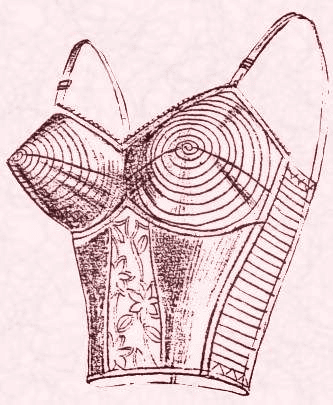
Source: fashion-era.com
Fast forward to 1950. This major year for bra history welcomed the famous ‘bullet bra.’ Logically, this undergarment style was characterized by conical, pointed cups.
The distinctive design of this bra made it especially popular with world-renowned stars of that time. Marylin Monroe was perhaps the most famous and faithful representative of the bullet bra.
It was a symbol of femininity, and you could say that its main purpose was to add to the exaggerated silhouette.
The 1960s Wonderbra’s Push-Up Bra
It’s 1960, and another game changer has come to the stage.
This time, it was the Wonderbra’s push-up bra, the decade’s innovation. Unlike its past models, this one used a combination of underwires and padding to lift the cleavage. The idea was to create a more voluptuous and dramatic look.
The 1970’s Sports Bra
The last innovation we’d like to bring is the sports bra, setting the stage for fitness undergarments in 1970.
Unlike the bullet bra and the push-up version, the sports bra aims to provide maximum support for the breasts and minimize movement during participation in sports and fitness activities.
Ongoing Evolution
The evolution of the bra didn’t stop in 1970.
On the contrary, it is still going strong today with new styles, fabrics, and designs emerging and helping women feel more comfortable in their skin.
As far as the evolution of fabrics goes, we can all agree that stretch lace, microfiber, and moisture-wicking fabrics have revolutionized the bra game.
Additionally, the constant evolution of environmentally-friendly materials continues to soar, protecting the planet.
This continuous evolution and constant improvement signifies a symbiotic relationship between the fashion, the designer, and the women who wear these undergarments daily.
Significance of Bra History
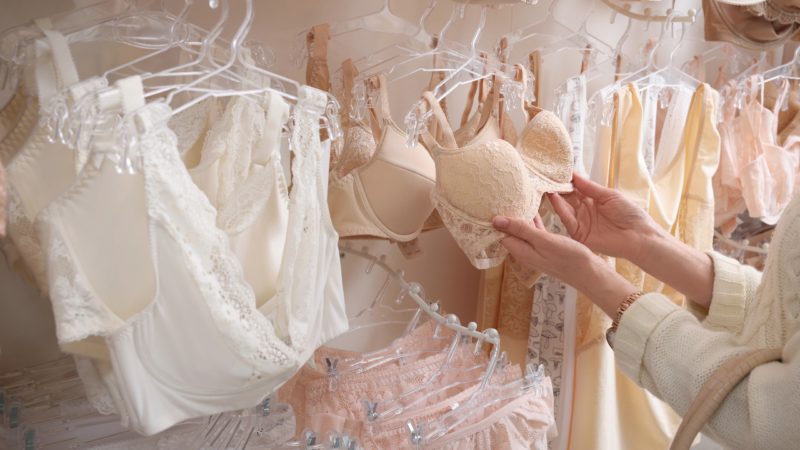
The immersive history of bras carries both cultural and societal importance. It reflects the evolution of not only fashion but also gender roles, as well as individual empowerment.
The extensive development of the bra, or brassiere, holds the efforts of fashion designers, innovations, but most importantly, the women who wear them at the end of the day.
It’s safe to say that there is no one ‘inventor’ but a collective effort to bring the end product to the wider public.
As women’s roles changed over history, so did the prototype of the bra, which we can see from our little history section in the beginning.
Lastly, the evolution of the bra allowed women to embrace their freedom. This made not only a fashion statement but a manifestation of women’s agency.
Evolution of Bra Styles
When the bra was invented, it was meant to support the breasts during athletic activity, and we can see that same purpose reflected in modern bra styles, too.
Granted, ancient bras looked nothing like modern bras; they were more like tight bandeau tops, but they served the same purpose – bust support.
Nowadays, there are so many different bra types offered by many bra manufacturers – and we’re free to choose a garment that makes us feel comfortable more than ever before. Let’s see how the bra evolved over the centuries due to the change in preferences, innovations, and trends in fashion!
Early Bra Designs: What Did the First Bra Look Like?
I talked about the first bra – typically made of leather or cloth – but then, medieval bras emerged. Four proto-brassieres were discovered in Austria, dating back to the late 14th century and the second half of the 15th century.
Most looked like shirts with bags for breasts, offering little support.
Also, the archeologists discovered a bra that featured two breast bags with shoulder straps and another that looked like a modern long-line bra with something similar to cups and thin shoulder straps.
These medieval bras resembled modern brassieres and can be considered the first bras ever made.
Everything changed in the 16th century, though, when women started wearing corsets.

Source: tumblr.com
Corsets were designed to lift everything up, the breasts were supported, and the waist was cinched to make the body figure similar to the hourglass.
The corset was primarily embraced due to a certain court banning thick waists, a testament to how the bra evolved to fit societal norms.
The late Victorian era came with the dress reform, with the suggestion to replace the corset with looser garments because of the health risks associated with wearing a corset long-term.
The “ban” on corsets freed women to join the workforce, empowering them to fight for their rights at the time.
In the 19th century, there were a couple of inventions similar to the modern era. Still, it finally took off at the beginning of the 20th century with Mary Phelps Jacob, two silk handkerchiefs, and a pink ribbon.
The Bra’s Impact on Fashion and Women’s Clothing
The evolution of the bra followed the fashion trends and women’s clothing of the time. For example, the first padded bras came with plunging necklines, allowing women to accentuate their bosom.
Wearing a bra allowed many women to feel more comfortable in their bodies.
Women with smaller breasts could opt for push-up bras or bras with padded cups, while many women with larger chests felt better wearing minimal bras or “minimizers,” which made breasts look visually smaller.
With different innovations in bra designs, clothing changed, too.
For instance, balconettes or strapless bras allowed women to wear dresses without the straps peeking out, while the invention of a backless brassiere made backless clothing an instant hit.
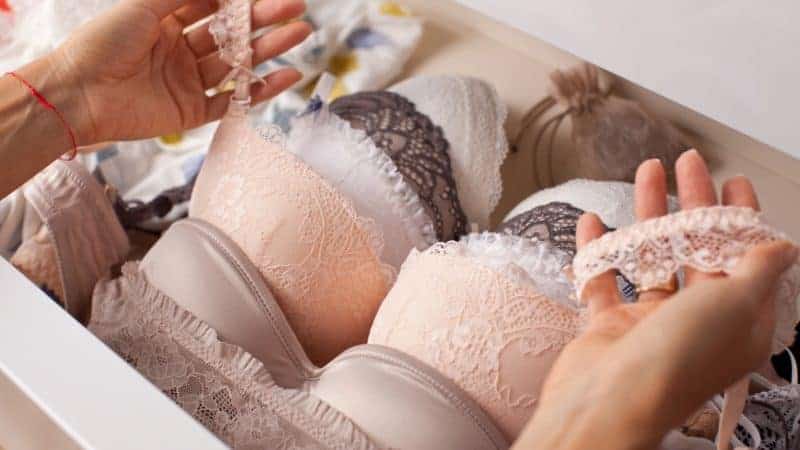
With the rise of lace bras, the undergarment slowly went from a functional item that kept everything in place during the day to a fashion statement. In recent years, bras have been seen as more than just underwear.
Women’s fashion is more liberated now, and bra-like items are worn as tops every day, contrary to that old belief that others should never see your bra straps.
The classic bra clasped at the back is now just one of the many bra types, and the bra manufacturers are making more inclusive items today.
Case in point? For women with disabilities, the front hook bra is a real game-changer.
Moreover, the bra industry is more focused on diversity these days, too. Now, the nude bra isn’t made in that one odd shade of beige but in all nude shades to accommodate women of all skin tones.
Large cup sizes are more widely available, while women with larger breasts have had some basic options or none at all decades ago.
And thanks to Dana Donofree, we now have modern mastectomy bras. Appealing and adjustable, these soft bras offer an alternative to the rigid and “medical” feel of bras for breast cancer survivors.
History of the Bra Timeline: Key Milestones in the Evolution of Wearing Bras
From the ancient proto-brassiere and the corsets of the Victorian era to the first modern bra, the was anything but linear. There were many bra variations before we finally settled on the one we’re wearing today.
So, with that in mind, let’s go over the most important moments in bra history.
Transition From Corset to Brassiere
Looking like an inverted cone shape and tightened with lace, the corset shaped and raised the breasts – accentuating the bustline. However, out of all bra-like undergarments, the corsets are arguably the most uncomfortable.
In the late 19th century, the first bra-like item, the split corset, was introduced.
The split corset was made by splitting it into two parts: the top to support the chest and the bottom to shape and cinch the waist.
So, you could say the first iteration of the modern bra appeared in 1869, thanks to the French designer Herminie Cadolle, who split a corset into two parts.
The Victorian era corsets were extremely rigid to cinch the waists and make them as small as possible. They didn’t feature separate cups, meaning they didn’t lift or accentuate the breasts.
Girdles and bust bodices became popular as the doctors believed they were not as harmful to women’s health as corsets.
Finally, the modern brassiere was introduced in 1907, when Vogue referred to Cadolle’s bra (specifically, the top half of the split corset) as the brassiere.
And a true revolution in women’s clothing began.
Mary Phelps Jacob’s Patent (1914)
It is impossible to discuss who invented bras and why without mentioning Mary Phelps Jacob. In the early 1900s, the popular body shape was slim and more “boyish,” a standard Mary’s curvy figure did not conform to.
She attended a debutante ball in 1910, where her sheer evening gown had a plunging neckline – making her corset cover peek through as she moved.
Frustrated, she took two silk handkerchiefs and some pink ribbon and sewn them together.
Upon trying it on, she found the item served a similar purpose as her corset -minus the discomfort and the worry it might be exposed during dancing.
Her invention allowed women to breathe in relief; the bra was born, marking the downfall of corsets.
Mary Crosby, born Mary Phelps Jacob, filed her patent in 1914 but later decided to sell her brassiere business to Warner Brothers Corset Company.
MaidenForm’s Maidenette (1920s)
Ida Rosenthal, a New York City seamstress, her husband William, and shop owner Enid Bissett changed women’s fashion in 1922 by starting Maiden Form and introducing bras for all ages.
Sheer and soft but supportive, their bras were a direct answer to the compression bandeau, accenting rather than flattening the chest.
Warner’s Introduction of Elastic (1930s)
In the 1930s, the bras took off, and most women were never seen without one again.
However, before that, options were scarce and limited, and there were no actual sizes. Instead, bra manufacturers relied on elastic materials to accommodate different shapes and sizes.
So, in the 30s, S.H. Camp and Company made the first sizing scale for bras with letters, the same one we’re using today. And thanks to Warner, the typical bra of this era featured an adjustable elastic strap, cup sizing, and padding.
Frederick Mellinger’s Padded Bra (1947)
A decade later, in 1947, the first padded bra was introduced, making every plunging neckline breathtaking. Frederick Mellinger introduced the world’s first push-up bra a year later, although it didn’t take off until the 1960s.
As you know, the padded bra continued to evolve, eventually turning into the memory foam bra – a hit of the 2000s.
Bullet Bra (1940s-1950s)
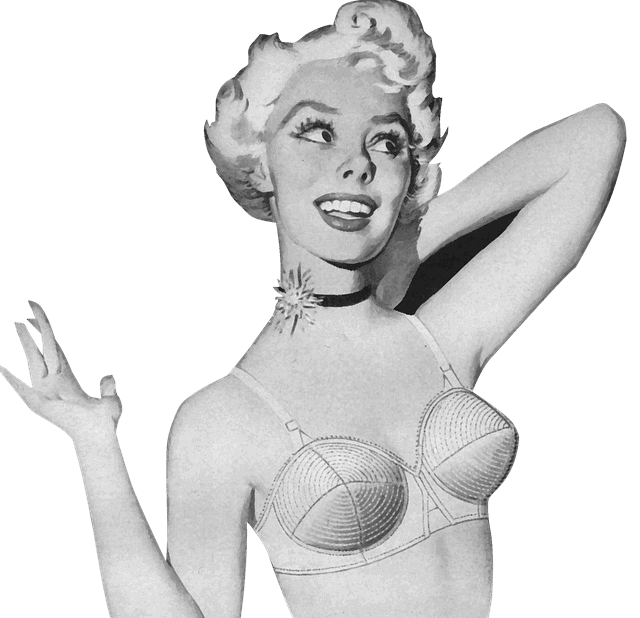
The bullet bra is one of those unforgettable designs. It seems almost unreal compared to modern bras – and is a true testament to the ever-changing women’s fashion.
Following World War II, there were many different bra styles – including the famous bullet or torpedo bra.
Marilyn Monroe, Patti Page, and other Hollywood starlets were famous for wearing the spiral-stitched bra that created a more defined, torpedo-like appearance of the breasts.
The underwire bra became popular despite being invented decades earlier. Along with it came the strapless gowns and, with it, the need for strapless bras, an undergarment that offered support without showing.
Wonderbra (1964)
Louise Poirier, a designer from Canada, created the first Wonderbra in 1964, which was made to lift and push breasts together to make the cleavage look fuller.
This push-up bra provided the “wow” effect that the bullet bra simply did not, leaving a lasting mark in the bra world.
The Wonderbra offered the dramatic push-up effect of the corset without discomfort or impracticality, making it an instant hit among women with smaller breasts and those looking for something “extra” in the padding department.
Sports Bra Invention (1977)
The modern bra offered a better look, more comfort, a “wow” effect – you name it. But it didn’t offer the option of being active like modern sports bra does.
Women in sports needed a bra that had the breasts supported – without losing any of the comfort.
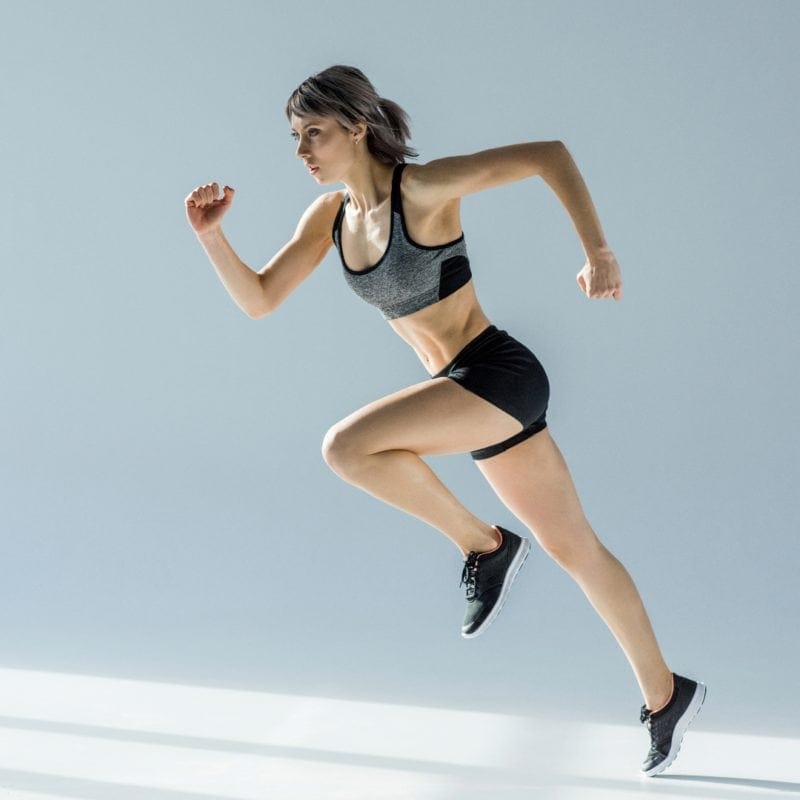
What’s interesting is that the first sports bra could be traced back to theater. They were made from two jock straps together – jokingly nicknamed the “jockbra,” which then turned into “jogbra,” and became an instant hit.
Providing high support, full coverage, and elastic that kept everything in place, the sports bra secured the breasts in the fabric like nothing before.
These days, we have many sports bras available, offering low, medium, or high support, making the sports bra a real game changer in the undergarment industry.
Victoria’s Secret’s Fantasy Bras (1990s)
If you’ve ever watched a VS Fashion Show, then you’ve heard about the Fantasy Bra, first introduced in 1996 under the name “Million Dollar Miracle Bra” and worn by Claudia Schiffer.
These bejeweled bras were initially presented on runways but were worn by musicians and celebrities.
Completed with the push-up design, the jeweled bra is known as the Fantasy Bra. This became a fashion item rather than a simple undergarment.
Smart Memory Bra (2009)
The first memory foam bra, with cups made from high-tech memory foam, entered in 2009.
It was designed to conform to the shape of the wearer’s chest and offered unmatched contouring and support while reacting to changes in body temperature and preventing overheating.
Conclusion: The Bra’s Enduring Legacy
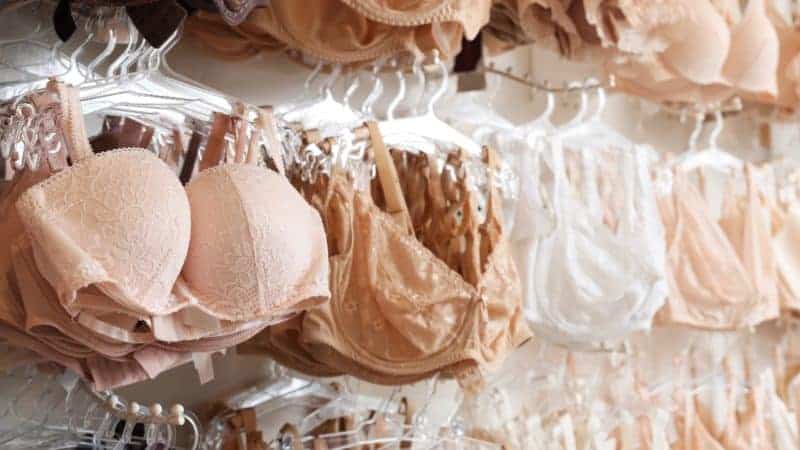
The evolution of the bra comes in many different shapes – from the first one made of silk handkerchiefs and pink ribbon to the everlasting push-up bra. So, it’s not just about who invented bra.
It’s about everything women can do, thanks to this invention.
The bra liberated women from their restrictive corsets, allowing them to play sports and join the workforce – and, ultimately, it can be seen as more than just some undergarment.
It is a genuine symbol of the feminist movement.

